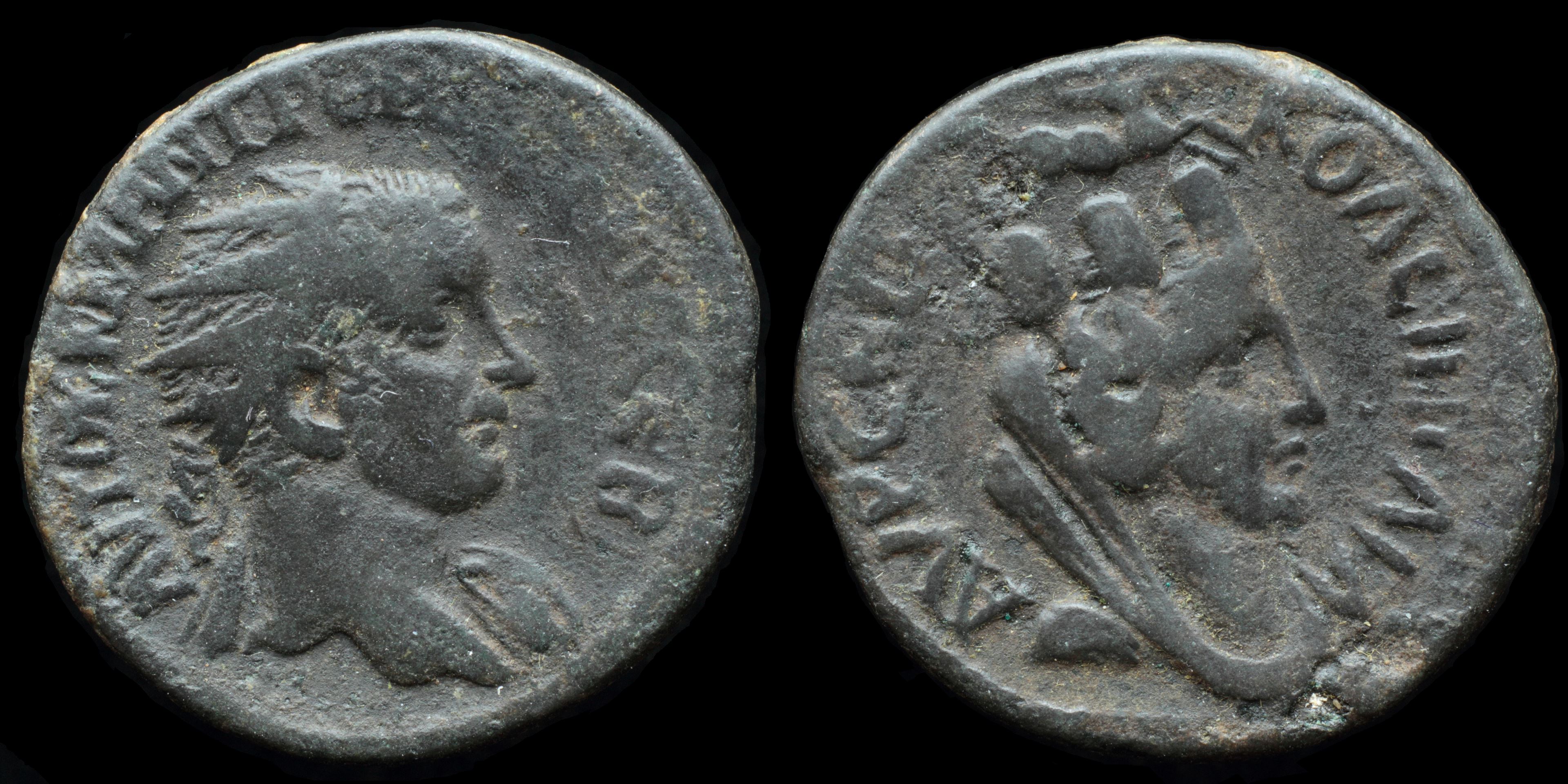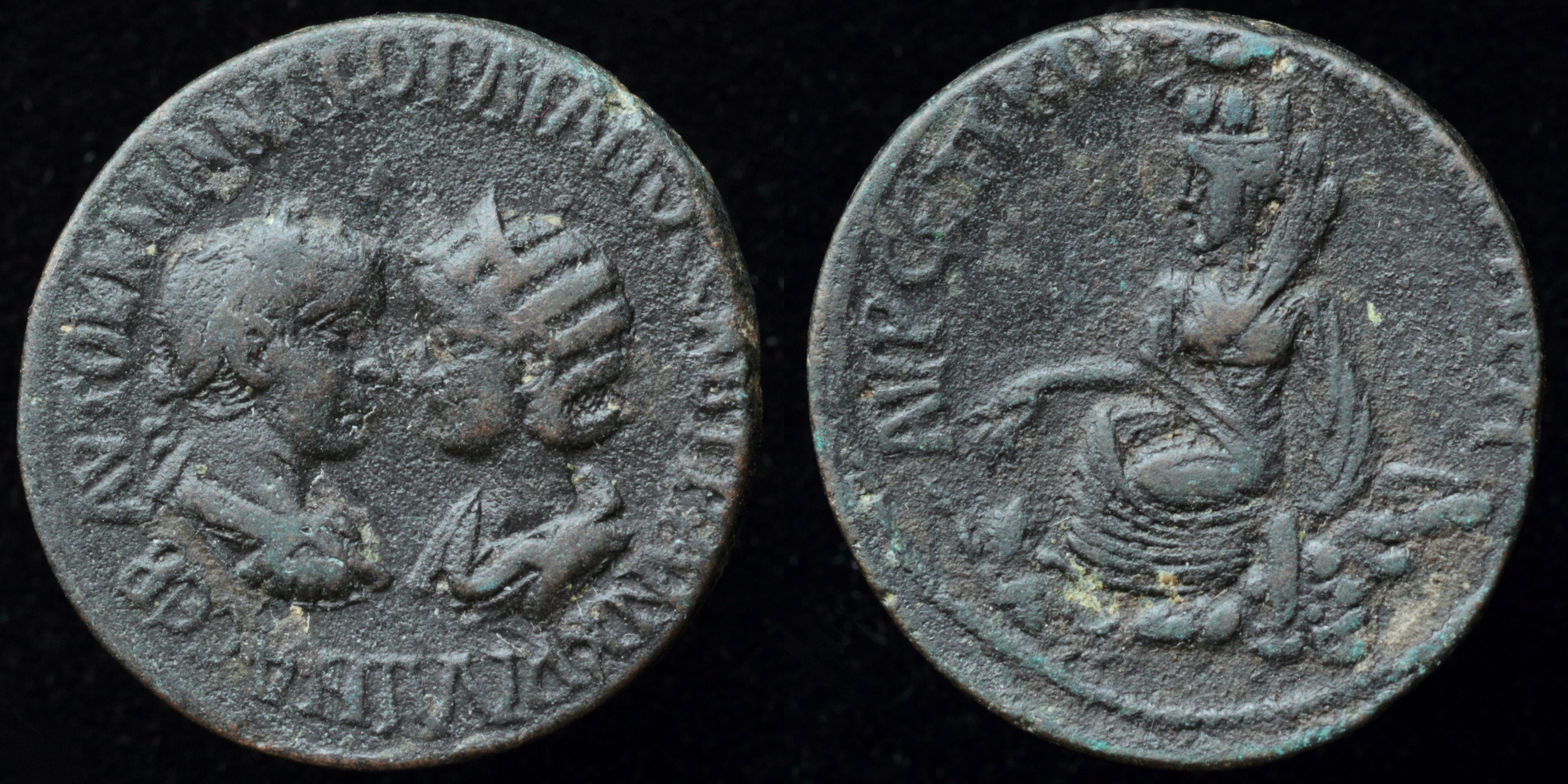Singara was a strongly fortified post at the northern extremity of Mesopotamia, which for a while, as appears from coins found, was occupied by the Romans as an advanced colony against the Persians. It was the camp of legio I Parthica.
It was first taken by the Romans during Trajan's eastern campaigns, when general Lusius Quietus captured the city without a fight in the winter of 114;[5] Although it was abandoned following the Roman withdrawal from Mesopotamia in 117, the city became once again part of the Roman Empire with the Parthian campaign of Septimius Severus in 197.
The city was raised by Severus to the status of a Roman colony, as is attested by the legend found on some of the coins minted there during the reign of Gordian III: ΑΥΡ. ϹΕΠ. ΚΟΛ. ϹΙΝΓΑΡΑ., which is Greek script for the city's Latin name, Aurelia Septimia Colonia Singara. It remained one of the easternmost outposts of the Roman Empire throughout the 3rd century.
It was first taken by the Romans during Trajan's eastern campaigns, when general Lusius Quietus captured the city without a fight in the winter of 114;[5] Although it was abandoned following the Roman withdrawal from Mesopotamia in 117, the city became once again part of the Roman Empire with the Parthian campaign of Septimius Severus in 197.
The city was raised by Severus to the status of a Roman colony, as is attested by the legend found on some of the coins minted there during the reign of Gordian III: ΑΥΡ. ϹΕΠ. ΚΟΛ. ϹΙΝΓΑΡΑ., which is Greek script for the city's Latin name, Aurelia Septimia Colonia Singara. It remained one of the easternmost outposts of the Roman Empire throughout the 3rd century.
Modern location: Balad Sinjar, Iraq
(1)
Gordian III

Obverse: radiate bust right, draped shoulder; AYTOK K M ANT ΓOPΔIANOC CEB
Reverse: turreted bust of Tyche right, Centaur Sagittarius above; AVP CEΠ__KOΛ CINΓAPA
Diameter:
25.5 mm
Die Orientation: -
Weight: 10.5 g
Die Orientation: -
Weight: 10.5 g
No notes for this coin
BMC Arabia 1; SNG Copenhagen 254

Obverse: Laureate, draped and cuirassed bust of Gordian III right from behind, confronting draped bust of Tranquillina left wearing stephane; AVTOK K M ANT ΓOPΔIANON CAB TPANKVΛΛINA CEB
Reverse: City goddess left seated on rocks, holding branch; Centaur Sagittarius above; river-god swimming below; AVP CEΠ KOΛ CINΓAPA
Diameter:
30 mm
Die Orientation: -
Weight: 17.4 g
Die Orientation: -
Weight: 17.4 g
No notes for this coin
BMC Arabia 8, SGICV 3804
